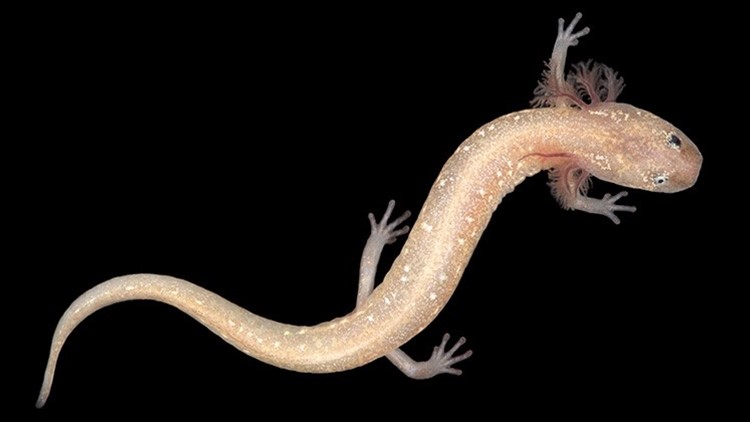AUSTIN, Texas — To some, the discovery of three new species of salamanders right here in Central Texas comes as exciting news. Sadly, the biologists' discovery isn't all positive -- the species are endangered.
Biologists at the University of Texas at Austin recently discovered the new species of groundwater salamander, including one living just west of Austin they say is critically endangered. In addition, they say an already known salamander species near Georgetown is much more endangered than they previously thought.
The scientists, which include one of the researchers who helped discover the endangered Barton Springs salamander, published their findings in the journal "Proceedings of the National Academy of Sciences." In the report, they warn that severe droughts caused by climate change and increasing water use in our area have left groundwater salamanders "highly vulnerable to extinction."
At just two or three inches long, groundwater salamanders in Central Texas swim in springs, underwater caves and channels deep inside limestone rock. They are known as "keystone" species in the local Edwards and Trinity aquifers because, as predators, they help maintain the health of these ecosystems while preserving water quality citizens depend on.
RELATED:
“Even if people do not care about salamanders, they care about maintaining the quality of the aquifer systems that provide most of Texas with its fresh water,” said David Hillis, professor of integrative biology and senior author of the paper. “Fortunately, what’s good for the salamanders is also really good for the people. What we need to do to protect these salamanders also happens to be the exact same things we need to do to protect the water resources that ranchers, cities, homeowners and everybody else depend upon.”
Hillis and his colleagues' discoveries have led Central Texans to work toward preserving endangered salamander species for years. This report adds to his other bodies of work that have led to protections for the Barton Springs salamander, the Austin blind salamander, the San Marcos salamander and the Georgetown salamander.
According to the University of Texas, one of three newly identified species, which has yet to be named, is critically endangered: a small, golden-colored salamander that lives only in a small area near the Pedernales River west of Austin. The scientists also learned that the Georgetown salamander, which lives in springs near Lake Georgetown and already has federal protection as a threatened species, has a much smaller range than they thought before, which leads it to be more endangered.
“I think the U.S. Fish and Wildlife Service should review the status of all these salamanders in light of the new evidence,” Hillis said. “They are part of the rich biological heritage of Texas, and losing these groundwater salamanders would be a huge loss for our state’s biodiversity. Importantly, protecting these salamanders also means protecting the quality and quantity of fresh water that Texans rely upon.”



